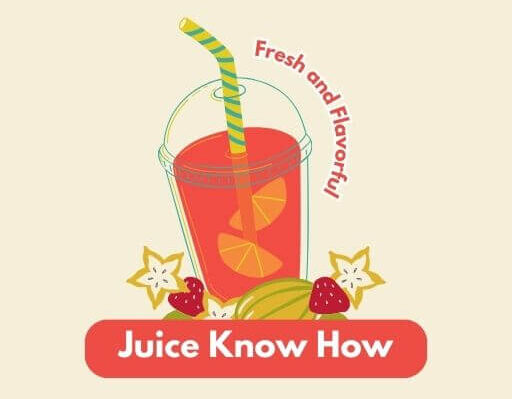Lemons, those bright yellow gems of the citrus world, are culinary powerhouses. From adding a zing to your morning tea to being the star of lemon meringue pie, their uses are endless. But have you ever stopped to wonder, “Just how much juice am I getting from each lemon?” If you’re like me, you’ve probably scratched your head over recipes calling for “the juice of one lemon” and thought, “Okay, but how much is that *really*?”
Let’s dive into the juicy details of lemon yield, explore some handy tips for maximizing your citrus harvest, and uncover why knowing the tablespoon-per-lemon ratio is a game-changer in the kitchen.
The Big Question: How Many Tablespoons in a Lemon?
Here’s the simple answer: On average, a medium-sized lemon contains about 3 tablespoons of juice. But, like with all things in life, there are nuances. The amount of juice you get can depend on several factors:
- Lemon Size: A larger lemon will naturally yield more juice than a smaller one.
- Lemon Variety: Different types of lemons have varying juice content.
- Ripeness: A ripe, juicy lemon will give you more juice than one that’s still firm.
- Squeezing Technique: The way you juice a lemon can also impact how much liquid you extract.
To give you a clearer picture, here’s a handy breakdown:
- Small Lemon: Approximately 2 tablespoons
- Medium Lemon: Approximately 3 tablespoons
- Large Lemon: Approximately 4 tablespoons (or 1/4 cup)
Lemon Juice Conversion Cheat Sheet
Want to be super precise with your lemon measurements? Here’s a quick conversion guide to keep on hand:
- 1/3 Lemon = 1 Tbsp Lemon Juice
- 1 Lemon = 3 Tbsp Lemon Juice
- 1 1/4 Lemons = 1/4 Cup Lemon Juice
- 2 1/2 Lemons = 1/2 Cup Lemon Juice
- 4 Lemons = 3/4 Cup Lemon Juice
- 5 1/4 Lemons = 1 Cup Lemon Juice
Why Does It Matter? The Importance of Accurate Lemon Juice Measurement
You might be thinking, “Why all the fuss about a few tablespoons?” Well, in cooking and baking, precision matters. Too much or too little lemon juice can throw off the flavor balance and the overall outcome of a recipe.
Here’s why knowing the tablespoon-per-lemon ratio is essential:
- Flavor Control: Lemon juice provides acidity and brightness. Too much can make a dish overly sour, while too little can leave it bland.
- Baking Chemistry: In baking, lemon juice can react with other ingredients, affecting the texture and rise of your baked goods.
- Recipe Consistency: Knowing how much juice to expect from a lemon ensures consistent results every time you make a recipe.
Pro Tips for Getting the Most Juice from Your Lemons
Ready to become a lemon-juicing pro? Here are some tried-and-true techniques for maximizing your yield:
- Choose the Right Lemons: Look for lemons that are heavy for their size and have smooth, thin skin. These tend to be juicier.
- Warm It Up: Before juicing, microwave the lemon for 10-15 seconds or roll it firmly on the countertop. This helps to break down the membranes inside, releasing more juice.
- Cut Correctly: Cut off the top and bottom of the lemon if it’s big to make it easier to squeeze.
- Use the Right Tools: A good citrus juicer can make all the difference. If you don’t have one, a fork can also help extract more juice. Simply press the fork into the lemon’s flesh and twist.
- Squeeze with Gusto: Don’t be afraid to put some muscle into it! Squeeze firmly and thoroughly to extract every last drop of juice.
Bottled vs. Fresh: Is There Really a Difference?
In a pinch, bottled lemon juice can be a convenient substitute for fresh. But when it comes to flavor, fresh is always best. Bottled lemon juice often contains preservatives and can lack the bright, zesty flavor of freshly squeezed juice. Plus, you miss out on the opportunity to use the lemon zest, which adds another layer of flavor to your dishes.
Beyond the Juice: Don’t Forget the Zest!
Speaking of zest, lemon zest is the finely grated outer peel of the lemon. It’s packed with aromatic oils and adds a concentrated burst of lemon flavor to both sweet and savory dishes. One lemon typically yields about 1 tablespoon of zest.
Fun Facts About Lemons
- Lemons are believed to have originated in Southeast Asia.
- Lemons are a hybrid of bitter orange and citron.
- The average lemon tree can produce up to 600 pounds of lemons per year.
Time to Get Juicing!
Now that you’re armed with the knowledge of how many tablespoons of juice are in a lemon, it’s time to put your skills to the test. Whether you’re whipping up a batch of lemonade, marinating chicken, or baking a lemon cake, you’ll be able to measure your lemon juice with confidence and precision. So go ahead, embrace the power of the mighty lemon and add a little zest to your life!
